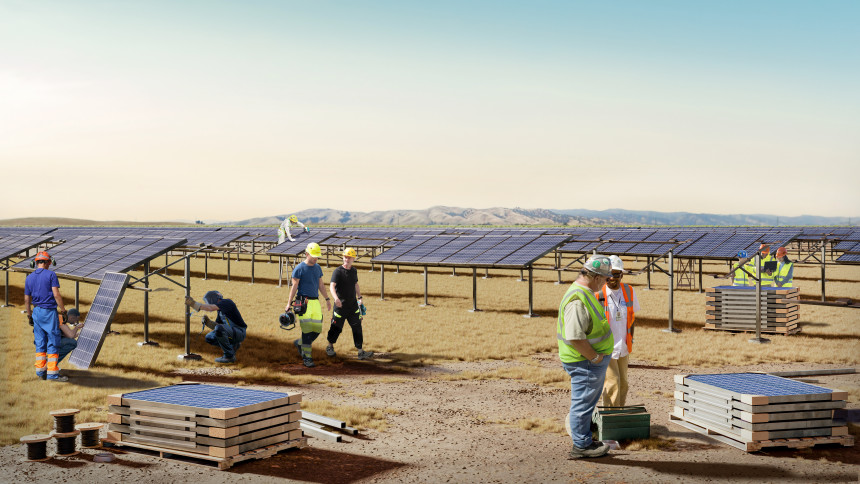Collaborating with UC Davis on research into combining solar farms with agriculture and habitat conservation
We’re excited to announce an initial gift to UC Davis to fund research into use of land for solar energy production combined with agricultural activities and habitat conservation. This practice is known as agrivoltaics/ecovoltaics, agrisolar, or agrophotovoltaics, and represents a promising approach to renewable energy generation, food production, and climate change mitigation.

This collaboration marks an important first step in achieving our goal to produce a significant amount of clean, green energy on our land to materially advance California’s renewable energy goals. Agrivoltaics is an innovative approach that allows us to combine solar energy production with agriculture and habitat restoration on the same land in a way that is both economically and environmentally sustainable.
The benefits of agrivoltaics include:
Maximizing land use efficiency
Agrivoltaics optimize land use efficiency by using the same land for both energy generation and agriculture. This symbiotic approach ensures that land resources are utilized to their fullest potential.
Enhancing agricultural resilience
Agrivoltaics offer tangible benefits to agriculture. Solar panels provide shade, mitigating extreme temperatures and reducing water evaporation, thus enhancing crop productivity while conserving water. Additionally, the microclimate created beneath the panels fosters favorable conditions for grazing animals and certain crops, extending growing seasons, improving yields, and actually increasing the lifespan of livestock by reducing environmental stress.
Advancing native plants and biodiversity
California’s Central Valley was once home to a sea of wildflowers, pollinators, and highly productive carbon-sequestering native grasses. Integrating native plants and flowers can reduce wildfire risk, create pollinator habitats, and improve soil vitality.
Improving solar farm operations
Combining the two uses can also improve solar farm operations. For example, grazing provides necessary weed abatement and agricultural vegetation can help cool solar panels, boosting their productivity.
Generating clean energy
With its abundant sunshine, California is well-positioned to lead the transition to renewable energy. By integrating solar panels into agricultural landscapes, California can make meaningful progress towards its goal of 100% renewable energy by 2045 while preserving agricultural activities and natural habitats.
In total, California Forever proposes to build up to 2 gigawatts of solar generation and provide an amount of power equal to 27% of all in-state generated hydropower. This is enough electricity to meet the instantaneous demand of about 1.5 million homes. The provision of clean energy on site would also remove nearly 1.8 million tons of CO2 emissions annually, the equivalent of taking about 400,000 cars off the road. In addition to these benefits, constructing and deploying solar farms on our lands will bring good paying local jobs to Solano County.
Solano County has an opportunity to lead innovation at the intersection of clean energy and agriculture. We look forward to collaborating with UC Davis to bring the right design and resources together to make this happen. We are committed to being good stewards of our land for generations to come and are excited for this opportunity to promote environmental leadership, enhance agricultural resilience, and contribute to the transition towards a more sustainable future.
More broadly, this project illustrates our overall belief in the power of innovation and design to create win-win-win scenarios that enable California to continue to lead the world in both innovation and economic opportunity. We believe that this is just one of many opportunities to design projects that provide homes, jobs, and clean energy that we need while also protecting the environment and agriculture.